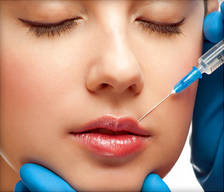The last trends in aesthetic medicine

Aesthetic medicine can be roughly broken into three categories, dermatology, plastic surgery and reconstructive surgery. Practitioners of aesthetic surgery can practice both surgical and non-surgical procedures. Both types, in the context of aesthetic medicine, are often requested by choice, rather than needed for non-voluntary, medical reasons.
A recently developing phase in aesthetic medicine is the promotion of health and wellness in general in addition to offering aesthetic procedures. People now use aesthetic medicine service providers for supportive treatments like hormone replacement, hair rejuvenation, weight loss programmes, or vitamin replacement, amongst others. Aesthetic medicine is, therefore, moving towards a more holistic approach to medicine by considering how people feel as well as how they look on a surface level.
Stem cell replacement therapy is another innovation of aesthetic medicine currently gaining popularity. This procedure removes stem cells from a patient’s fat and then injects these back into the patient, which triggers anti-ageing reactions from the body.
Micro-needling is also becoming a commonly requested procedure. Micro-needling uses many fine needles to penetrate the skin’s immediate surface. This results in a controlled injury that triggers a response from the body that produces more collagen and elastin. This rejuvenates and firms the skin and promotes a youthful appearance.
Finally, for women, aesthetic medicine is developing new procedures to target vaginas in need of rejuvenation or repair after childbirth. Vaginal rejuvenation improves the muscle quality and strength of the internal vaginal canal. Previously, these results could only be attained after invasive surgery, but developments in aesthetic medicine can be achieved through the use of laser therapy.
